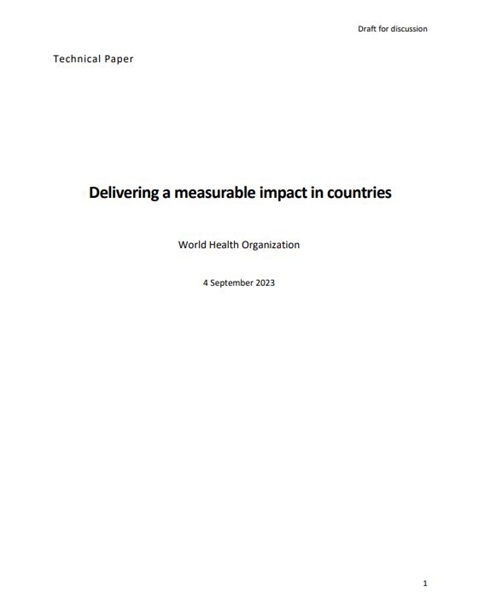Delivering a measurable impact in countries

Overview
The world is off track to reach most of the triple billion targets and the health-related Sustainable Development Goals (SDGs). Urgent action is needed to accelerate progress, or the world may fall further off track. In response to the ever-changing global health challenges, WHO embraced the approach of Delivery for Impact, as part of its transformation led by the Director General, emphasizing translating data, science, and evidence into tangible results in countries.
Delivery for Impact is a way of working that answers the simple but profoundly important question of how WHO can drive a measurable impact in countries. By supporting Member States and working alongside with partners to get things done, Delivery for Impact optimized impact in countries. Over the past five years, WHO has been streamlining this practice across all three levels of the organization and in countries and it is taking root. The opportunity is now to scale it up and make it a core part of GPW14 making a significant contribution to global health.
Incorporating the practice of delivery is a crucial part of the Results-Based Management (RBM) and Country Cooperation Strategy (CCS). This will ensure accountability, efficiency, and transparency of the Secretariat. By integrating delivery principles, WHO aims to be more agile and responsive to country priorities, focusing on effective solutions to accelerate measurable impact and address health inequalities. It puts in place routines to track progress when things go off track, enabling course correction and overcome unforeseen challenges until the goal is achieved. The impact-focused CCS could become a platform for delivery lending to collaborative decision-making, prioritization, implementation of high impact initiatives, resource planning and mobilization, accountability, and supporting Member States, while tracking the Secretariat's contribution.
Almost 100 countries are working on their CCS in collaboration with their governments. Ten WHO country offices have demonstrated impressive commitment using the end-to-end delivery approach in a 100-day challenge. For example, Nepal's success in securing the Pandemic Fund was attributed to integrating acceleration scenarios for implementing the International Health Regulations (2005). Over 50 countries have also adopted delivery tools to enhance their effectiveness to specific programmes.
Global stocktakes, chaired by the Director-General with senior leadership at all three levels, track progress towards SDGs and triple billion targets. These stocktakes focus on the programmatic areas such as climate and health, obesity, tuberculosis, primary health care, health financing, health workforce, health emergencies preparedness, and reducing maternal mortality, to identify milestones and outputs to accelerate progress and drive implementation. These stocktakes shift the focus from problems to solutions and from planning to action, driving implementation and programmatic accountability. Several countries are using delivery stocktakes to track and manage national and subnational progress.
The combined efforts of WHO's RBM system and the Delivery for Impact approach are visibly transforming the organization. This systematic application, evident in the GPW13 global targets, results framework, and country prioritization processes, is leading to a more impact focused WHO, enabling intentional achievement of country impact.
